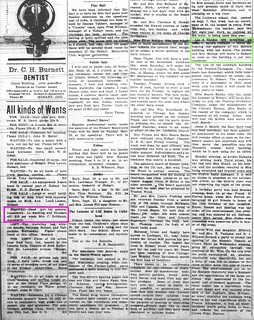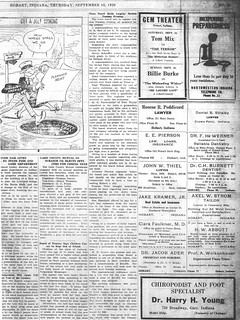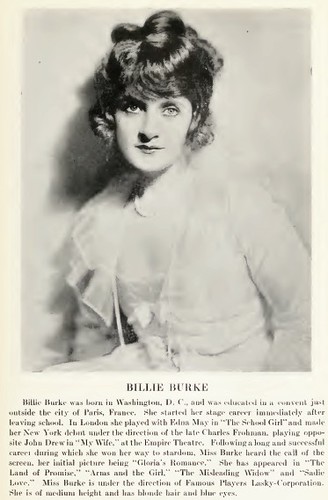
(Click on image to enlarge)
The wages of that "good girl" in the Goldman household were equivalent to about $116 per week in 2013 dollars. If room and board were included, that wasn't too miserable. The average weekly wage for women in manufacturing jobs in 1920 was $15.14 (around $200 in 2013 money). (Men in unskilled manufacturing jobs at that time made about $22 per week; unionized tradesmen in Chicago earned $55 weekly.)
The Goldman household in 1920 was small — just Charles and Amelia, and the 16-year-old daughter who was mysteriously absent from the 1910 census. But they had a store to look after.
The frivolous pleasure-seekers in the front-page cartoon here seem headed for the Gem Theater, where on Sunday evening they could catch Billie Burke, who is best known to us as Glinda the Good Witch in The Wizard of Oz.

(Click on image to enlarge)
From the Hobart News of Sept. 16, 1920.

Billie Burke circa 1920. Image credit: Wikimedia Commons.
Sources:
♦ 1910 Census.
♦ 1920 Census.
♦ "All kinds of Wants." Hobart Gazette 17 Sept. 1920.
♦ CPI Inflation Calculator.
♦ "Local Drifts." Hobart Gazette 17 Sept. 1920.
♦ Smiley, Gene. "The U.S. Economy in the 1920s." EH.Net Encyclopedia. Edited by Robert Whaples. http://eh.net/encyclopedia/article/Smiley.1920s.final (2010).
♦ VanGiezen, Robert, and Albert E. Schwenk. "Compensation from before World War I through the Great Depression." Originally printed in Compensation and Working Conditions, Bureau of Labor Statistics, Fall 2001. Posted January 30, 2003, to http://www.bls.gov/opub/cwc/cm20030124ar03p1.htm.


No comments:
Post a Comment